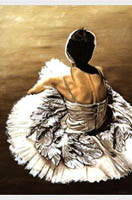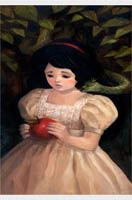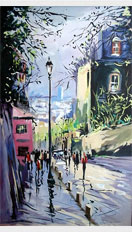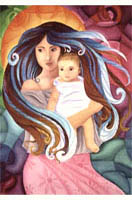Oil painting -> List of Painters ->Cimabue
Cimabue
 |
Early Days: |
Career:
Owing to little surviving documentation, not much is known about Cimabue's life. He was born in Florence and died in Pisa. His career was described in Giorgio Vasari's Lives of the Most Excellent Painters, Sculptors, and Architects (called, in Italian, Le Vite), widely regarded as the first art history book, though it was completed over 200 years after Cimabue's death. Although it is one of the few early records we have of him, its accuracy is uncertain. According to Hugh Honour and John Fleming: "His name is, in fact, little more than a convenient label for a closely related group of panel and wall paintings"
Judging this by the commissions that he received, Cimabue appears to have been a highly-regarded artist in his day. While he was at work in Florence, Duccio was the major artist, and perhaps his rival, in nearby Siena. Cimabue was commissioned to paint two very large frescoes for the Basilica of St. Francis of Assisi. They are on the walls of the transepts: a Crucifixion and a Deposition.
|
Unfortunately these works are now dim shadows of their original appearance. During occupancy of the building by invading French troops, straw caught fire, severely damaging the frescoes. The white paint was partially composed of silver, which oxidised and turned black, leaving the faces and much of the drapery of the figures in negative.








